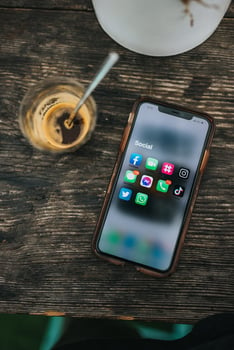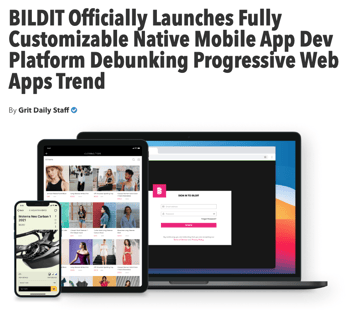From ecommerce to mcommerce: why more shoppers are making purchases via phone
Before a phone was the handheld powerhouse that it is today, it was exactly what the vegistal name suggests—a phone.
Why did this device turn from a phone to an emailer, meteorologist, calendar, parking meter, entertainment center, and phone? Because it’s convenient to have all of those parts of our lives consolidated in one place––and connected in one place. It’s easy to cross reference your schedule and the weather, to text a friend a funny video, and to jump directly from a pizza place on your map to its reviews on yelp.
With all of this convenience and consolidation, the transition from ecommerce (electronic commerce) into the more specific mcommerce (mobile commerce), feels intuitive. Let’s break down why the shift is happening.
It’s simply…easier.

In 2022, for every 10 dollars of ecommerce spending, 7 of those are spent on mobile devices. And for good reason.
The average American spends 5-6 hours a day on their phone. If the goal of retail is to make shopping convenient, why not bring shopping right to where people are spending their time?
Unlike laptops and desktops, mobile devices are easy to transport. That means easy shopping on your commute, in line at the DMV, or waiting for your child to get out of soccer practice.
Payment transaction safety
In 2019 the percentage of ecommerce payment transactions made via mobile wallet hit 41.8%. By 2023 that number is expected to rise to 52.2%. With debit and credit card usage rates sinking, the act of pulling out a credit card to input information into a web browser has already begun to feel archaic.
Mobile wallet transactions feel safer—and they are safer. Firstly, all of the user’s information is saved directly to the device, keeping things in one protected place. Next, measures like two-factor authentication serve to ensure better security. Lastly, though perhaps obvious, not having to deal with a physical credit card at a drive through, on-the-go, or even in your home, decreases the chance of card loss or theft.
Integration of social and shopping

Mobile devices serve to connect; not only connecting us to each other, but also connecting pieces of our lives to each other. That means you can review your work schedule, coordinate a girls’ trip, book flights, check the weather, buy a swimsuit, and request a venmo for the airbnb—all quickly and easily on your phone.
Social media, (in one form or another) is here to stay. We’ve watched social media platforms grapple with how to monetize, from advertisements to premium plans. Now, many social sites are looking to integrate shopping and social directly. With sites like Pinterest and Facebook implementing “buy” and “shop” buttons, the fine separation between marketing and the actual purchasing has diminished.
Influencers market to people through phone screens. Friends send links to items via text. Pinterest boards turn into packages. All by way of the mobile device. There’s reduced wait time between impulse and purchase because it's now fast, easy, and safe to shop on your phone.
The power of app
Now that more and more shoppers are turning to mcommerce, what’s separating the great retailers from the unsuccessful? Easy-to-use, incentivized, and fast apps.
With decades of research and expertise about what makes a mobile app fantastic, we’re offering an affordable and simple way for companies to create or improve their mobile app. You can get your free demo of our mobile app development platform here.
[images by Laura Chouette, Nathan Dumalo, Bruce Mars]












